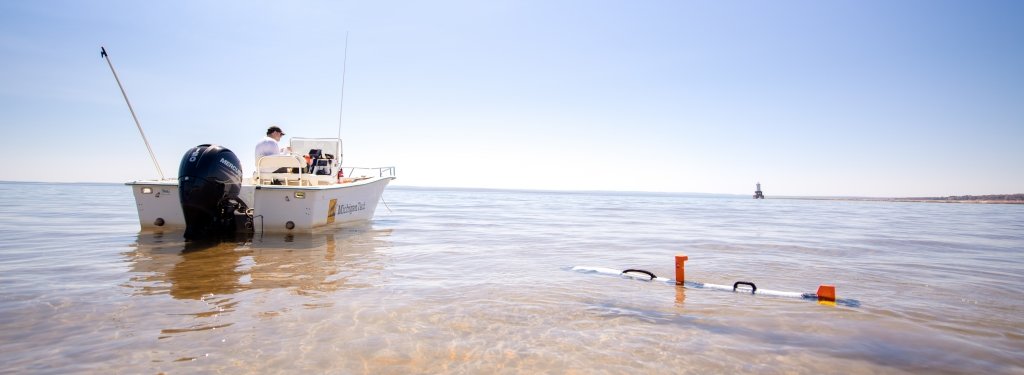Following Phragmites Home: Scientists Use Satellite Data to Map Invasive Species in Great Lakes Wetlands

Phragmites australis, an invasive species of plant called common reed, grows rapidly into dense stands of tall plants that pose an extreme threat to Great Lakes coastal wetlands. Early treatment is the key to controlling Phragmites.
But how can these invasive reeds be eradicated before they take over their environment if we don’t know where they are?
Now we do know, thanks to scientists from Michigan Technological University’s Michigan Tech Research Institute (MTRI), the US Geological Survey (USGS), Boston College and the US Fish and Wildlife Service (USFWS). They mapped the US coastline of all five Great Lakes using satellite technologies. Combined with field studies along those coastlines to confirm the satellite data, the map shows the locations of large stands of the invasive Phragmites located within 6.2 miles of the water’s edge.
The results of their three-year study are reported in a special issue of the Journal of Great Lakes Research focusing on remote sensing.
The Phragmites map is the first of its kind. Lead author Laura Bourgeau-Chavez, a research scientist at MTRI in Ann Arbor, Mich., calls it “a highly accurate data set that will allow national, regional and local managers to visualize the extent of Phragmites invasion in the Great Lakes and strategically plan efforts to manage existing populations and minimize new colonization.”
Why is invasive Phragmites such a threat? The invasive form can out-compete native wetland plants for resources, quickly dominating wetlands. It displaces native vegetation and reduces the quality of the habitat, the scientists say, altering nutrients in the soil and water, decreasing the diversity of animals and plants that normally live there, increasing air temperatures, drying wetland soils and trapping sediments. Mature stands of Phragmites often reach 16-feet tall, interfering with shoreline views, which can lower property values.
Using synthetic aperture radar (SAR), the researchers were able to use the longer wavelengths of SAR (approximately 23 centimeters) to distinguish between high biomass invasive Phragmites and other types of wetland vegetation. It also helped them detect flooding under a canopy of plants. For the entire Great Lakes basin, the overall accuracy of the resulting map was 87 percent.
To validate their classification of the satellite data, similar information was collected by hand at random sites throughout the coastal wetlands of the Great Lakes during 2010 and 2011. By the end of 2011, a total of almost 1,200 half-acre field sites had been checked.
Lakes Huron and Erie turned out to have the greatest amount of invasive Phragmites. The project identified a smaller extent of Phragmites in Lake Michigan but only a few stands in Lake Ontario and almost none in Lake Superior.
Although other factors may be at play, it appears that climate is helping determine the northward range of Phragmites. Changing climate conditions, therefore, may have broad impacts on the distribution of Phragmites. With the developed dataset, scientists can effectively model future range extension and target control efforts. The methods developed in the project can also be used to re-map targeted areas in the future.
The Canadian coastlines of the Great Lakes were not included in this study due to financial constraints. In the future, the researchers hope to extend their mapping to the Canadian shores and further into the landscape than the current 6.2 miles.
The research project was funded by the US Environmental Protection Agency’s Great Lakes Restoration Initiative through a cooperative agreement with the USGS Great Lakes Science Center and USFWS.
Michigan Technological University is an R1 public research university founded in 1885 in Houghton, and is home to nearly 7,500 students from more than 60 countries around the world. Consistently ranked among the best universities in the country for return on investment, Michigan's flagship technological university offers more than 185 undergraduate and graduate degree programs in science and technology, engineering, computing, forestry, business, health professions, humanities, mathematics, social sciences, and the arts. The rural campus is situated just miles from Lake Superior in Michigan's Upper Peninsula, offering year-round opportunities for outdoor adventure.




Comments